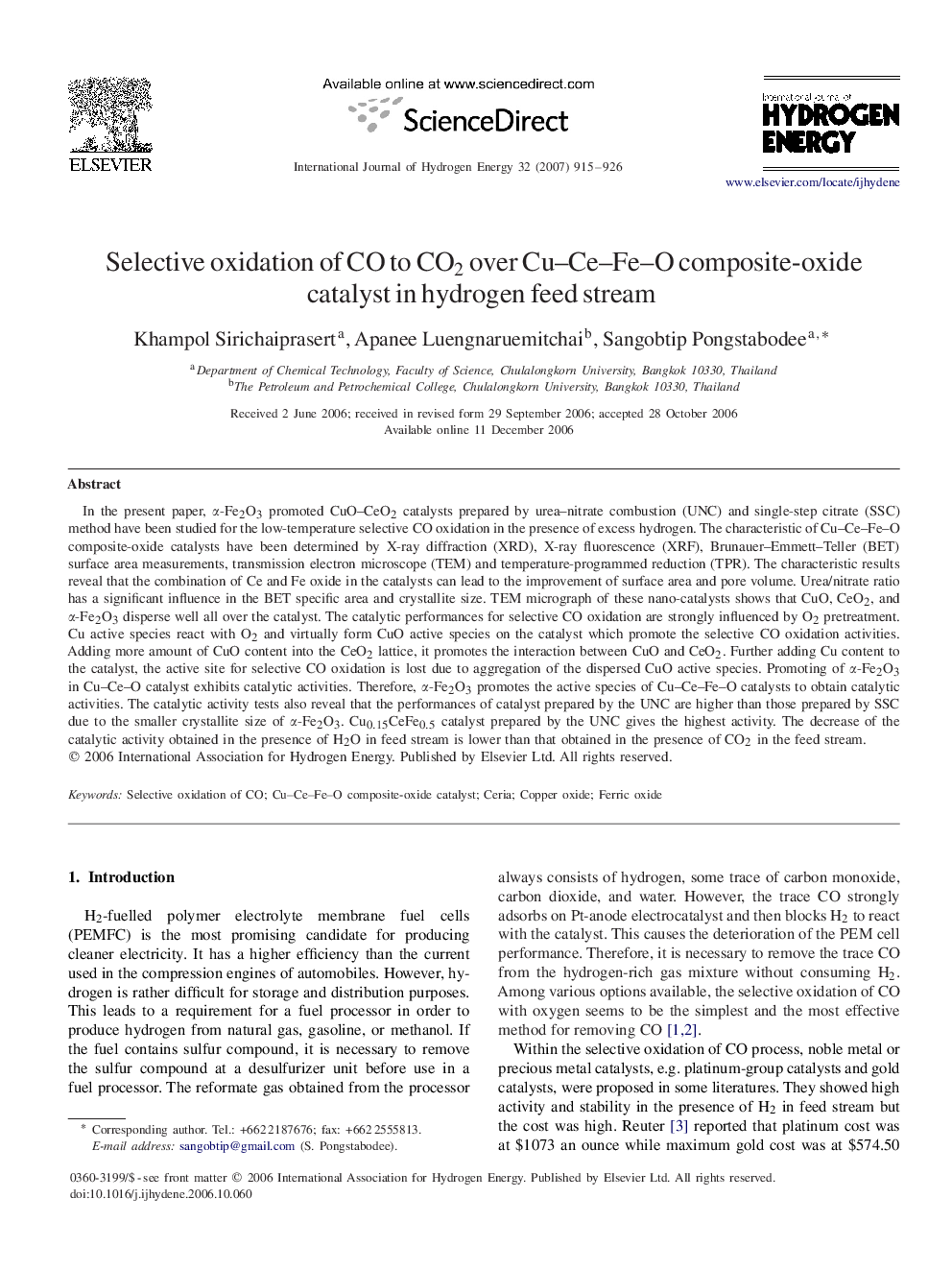| Article ID | Journal | Published Year | Pages | File Type |
|---|---|---|---|---|
| 1279877 | International Journal of Hydrogen Energy | 2007 | 12 Pages |
In the present paper, αα-Fe2O3Fe2O3 promoted CuO–CeO2CeO2 catalysts prepared by urea–nitrate combustion (UNC) and single-step citrate (SSC) method have been studied for the low-temperature selective CO oxidation in the presence of excess hydrogen. The characteristic of Cu–Ce–Fe–O composite-oxide catalysts have been determined by X-ray diffraction (XRD), X-ray fluorescence (XRF), Brunauer–Emmett–Teller (BET) surface area measurements, transmission electron microscope (TEM) and temperature-programmed reduction (TPR). The characteristic results reveal that the combination of Ce and Fe oxide in the catalysts can lead to the improvement of surface area and pore volume. Urea/nitrate ratio has a significant influence in the BET specific area and crystallite size. TEM micrograph of these nano-catalysts shows that CuO, CeO2CeO2, and αα-Fe2O3Fe2O3 disperse well all over the catalyst. The catalytic performances for selective CO oxidation are strongly influenced by O2O2 pretreatment. Cu active species react with O2O2 and virtually form CuO active species on the catalyst which promote the selective CO oxidation activities. Adding more amount of CuO content into the CeO2CeO2 lattice, it promotes the interaction between CuO and CeO2CeO2. Further adding Cu content to the catalyst, the active site for selective CO oxidation is lost due to aggregation of the dispersed CuO active species. Promoting of αα-Fe2O3Fe2O3 in Cu–Ce–O catalyst exhibits catalytic activities. Therefore, αα-Fe2O3Fe2O3 promotes the active species of Cu–Ce–Fe–O catalysts to obtain catalytic activities. The catalytic activity tests also reveal that the performances of catalyst prepared by the UNC are higher than those prepared by SSC due to the smaller crystallite size of αα-Fe2O3Fe2O3. Cu0.15CeFe0.5Cu0.15CeFe0.5 catalyst prepared by the UNC gives the highest activity. The decrease of the catalytic activity obtained in the presence of H2OH2O in feed stream is lower than that obtained in the presence of CO2CO2 in the feed stream.
